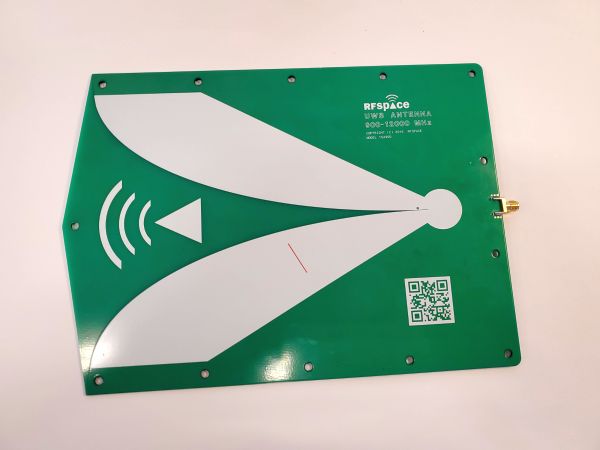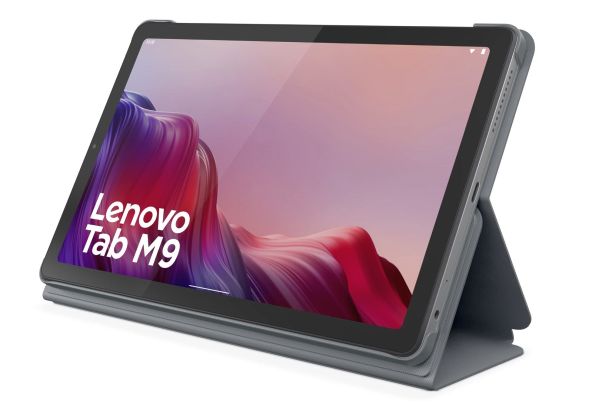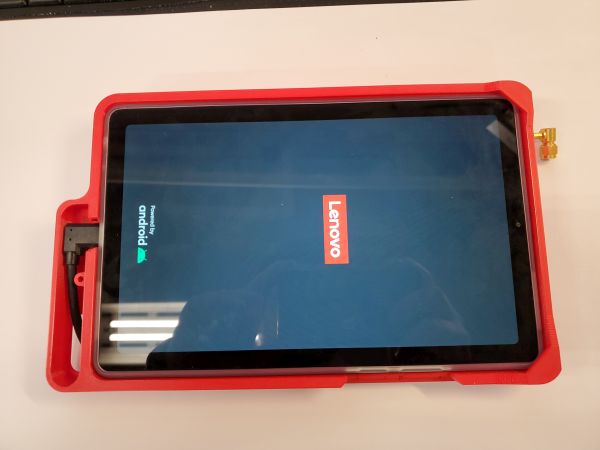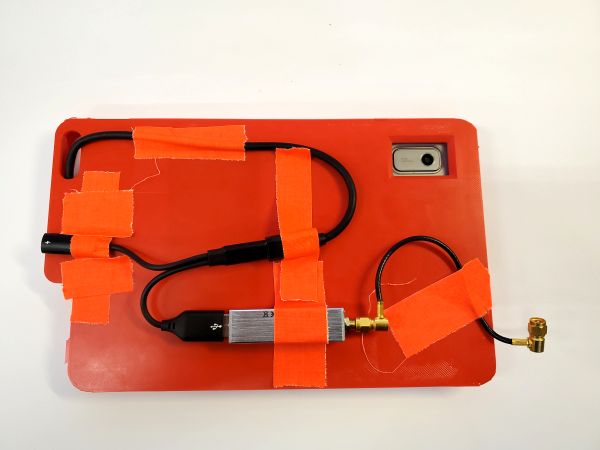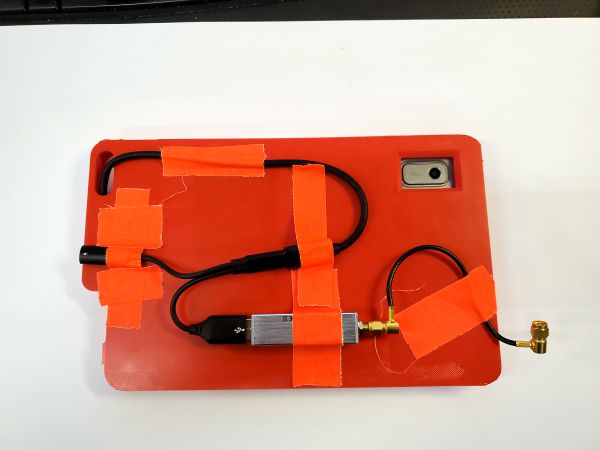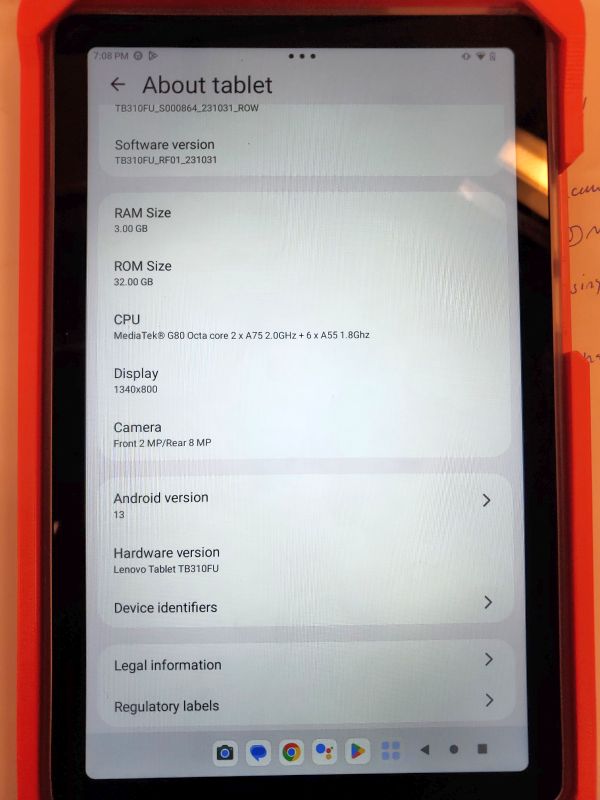
Dane Kouttron
This project / write up is in progress, check back for more soon!
Project Started: 12/2023
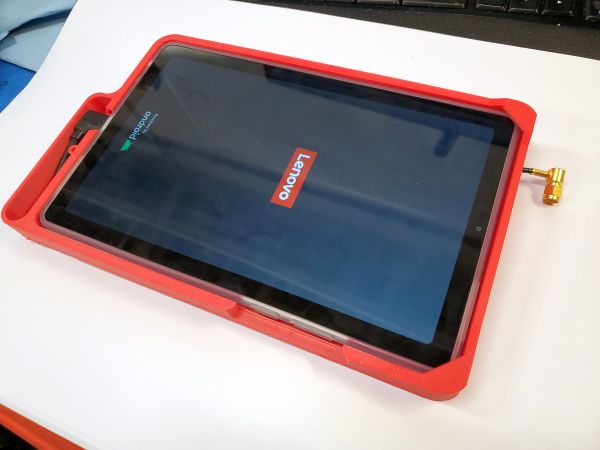
Android can run a software defined radio?It's wild that a budget tablet has enough cpu to run a software defined radio. I've wanted a portable radio gadget for ages but the combination of hardware and software support were never quite there. It seems that's recently changed so lets give a go at making a 'RF Tricorder' from off the shelf parts. There's a pile of projects that open up when you can 'see' radio. Time to dig into what hardware would work well together |
Some Project Background
Have you ever crashed a drone in the woods? You're out looking for it hoping your tiny remote finds it as you stumble in the woods? What would be kind of wild is just making a lost quadrotor hunter. We know that off the shelf quadrotors in the states are 2.4 or 5.8ghz, so finding an SDR that can reach up into those bands would be stellar. There's plenty of wifi interference from those bands but just having gadget hunter would be pretty exciting. What does a downed drone look like in the rf spectra? Using components to define a designHere's a few things I wanted to design around, a budget Android tablet [Lenovo tab M9] and a Ultra Wide Band 900mhz to 12ghz antenna. I know there's no way i will be able to software decode 12ghz but this does cover the three bands I care about, 900mhz, 2.4ghz and 5.8ghz. Why did I pick the Lenovo Tab M9? I didn't, this was purchased as a gift for a relative but unfortunatley did not end up getting used, and by the time I got it back it was way past microenter's return window. It is fairly nice all things considered, and pleasantly on the budget side of things, making this more available to other people going down the same route. The UWB antenna covers the entire surface of the android tablet, which is not necessairally a bad thing. While i'd prefer to use the tablet in horizontal mode, having the antennas act as part of a case would be a pretty cool feature. I mocked up some ideas and came up with the idea of having an antenna that folds over the top of the tablet. The first draft CAD modelThe plan was pretty simple, constrain the tablet, grab the USB-C port at the bottom and try to contain everything to both act as a protective case and also permit tinkering. There are some pretty excellent USB-C power + OTG splitters. The cabling is going to be a bit odd, but we can map out what hardware exists and see what the layout of the cabling looks like. My first plan to constrain the tablet was to have it slide in on the top, and then a USB-C cable sits in a notched cutout. A printed plate is screwed on top to keep the whole thing contained. Here's how it came out. I found some issues on the first pass model, and ended up pulling in some of the dimensions such that the tablet could fit in a bit more snug. My initial plan was to use a nooelec USB SDR and you can see my plan for the cable routing. By taping the cables to the back of the print I was able to plan out something to consrain the cabling with a print or something. Note that i left the rear camera port open and the print fortunatley did not obstruct the view. After cleaning up some of the tolerances of the print, I printed the second version on a Prusa MK4. Its pretty clear that the tablet itself chews up a lot of the build platform, and adding the borders and little USB-C pocket pushes us fairly close to the edge of the print bed. I'd really like to stick to making this project print-able on an Ender-3 or Prusa-MK3 / MK4. These are the common in the hobby sphere. Going any larger would really limit anyone else from being able to duplicate this project. One way to speed up the development process is to add thermal inserts to the model to allow other things to mechanically attach to the base model. The off the shelf cable assemblies somewhat define where things will live. One of the parts that will be a bit more difficult to locate is the USB-C charge port. This concept was used to turn the back into a breadboard, by adding an array of M3 thermal inserts. I don't want to go the route of leaving these in the final model, but I really like the route of having options on an intermediary model. I also added screw holes at the 'top' of the model to attach some kind of hinge mechanism.
Have you noticed that there are no
advertisements or ridiculous pop ups?
|
Post your comments! |
|
Comment Box loading
|
